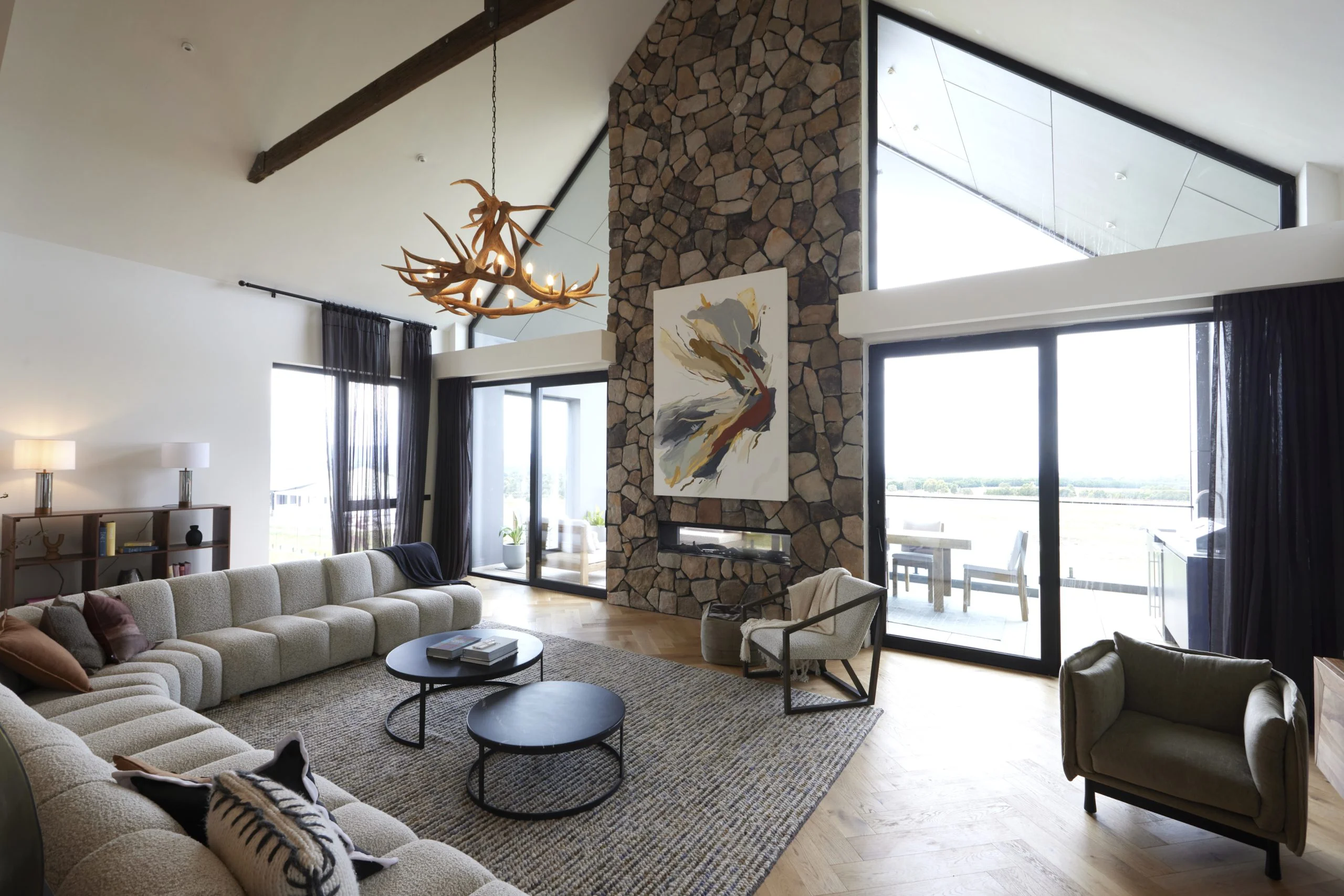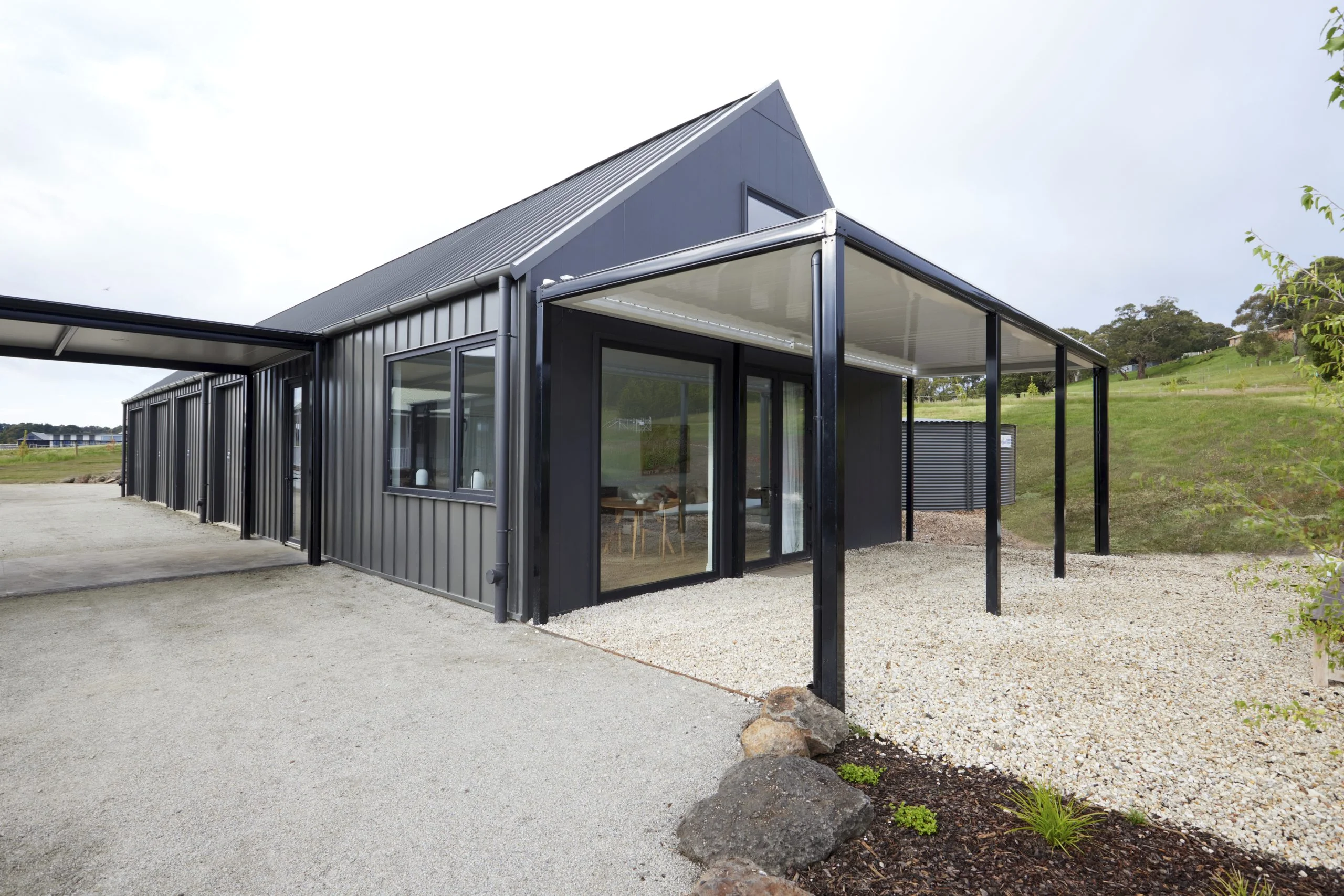Understanding Passive Design: How Does Passive Heating Work?

When it comes to sustainable architecture and building, harnessing the power of nature and eco-friendly materials to heat a home is best practice design. In minimising or negating the need for heating and cooling devices, while still optimising comfort, passive heating has huge benefits for both the planet and the homeowner’s wallet.Let’s look at what passive heating is, plus how to achieve it through design and sustainable materials such as Thermotek window and door systems.
What Are the Key Benefits of Passive Heating?
Passive heating is by far the cheapest way to heat a home. When it is incorporated from the outset into a home’s design, it’s relatively cost effective and can be achieved within budget.
Passive heating utilises natural processes to heat a building without needing to tap into mechanical heating or cooling systems. It captures, stores and distributes solar energy to maintain comfortable indoor temperatures. Think of passive heating as powered by the sun but driven by passive design methods.
It’s a versatile design approach and can suit all climates where winter heat is required. It can also be retrofitted into existing houses and apartments by increasing shading and improving insulation and ventilation. The biggest long-term benefit is low energy bills for the house occupants.
Is Passive Solar Heating the Same as Passive Heating?
These terms are often used interchangeably, but they have slightly different definitions.
Passive heating refers to any design strategy that keeps a building warm without relying on mechanical heating systems. Passive solar heating specifically uses the sun’s energy to warm a building. It involves strategic window placement, thermal mass (like concrete or brick), and orientation to maximise heat gain in winter while minimising overheating in summer.
So, all passive solar heating is passive heating, but not all passive heating relies on the sun — some strategies focus more on insulation and heat retention.
What Home Design Methods are Needed to Create Passive Heating?
Passive heating is achieved through the core principles of passive design. The idea of the Passive House originated in Germany, through the Passivhaus Institut founded by Dr Wolfgang Feist. It aims to create homes that are sustainable, incredibly low in energy use and comfortable for inhabitants.
The building envelope does most of the work to achieve this, creating passive heating while simultaneously lowering the carbon footprint.
Passive heating is created through a ‘fabric first’ approach that harnesses the power of nature through the following methods.

Thermal Mass
Thermal mass refers to the ability of a material to absorb and store heat. Materials with high thermal mass, such as concrete, brick, or tile, absorb heat during the day and release it slowly at night, helping to keep the building at a comfortable temperature.
It’s a good idea to locate thermal mass where it will be exposed to direct solar radiation, for example near north-facing windows. Thermal mass absorbs radiant heat as well as solar radiation, so positioning thermal mass walls between northern living areas and southern sleeping areas will radiate daytime solar gains into sleeping areas at night through thermal lag (it will also block noise).
Another example of using thermal mass principles is installing a Trombe Wall; an external construction detail that collects heat in winter and can dump heat in summer.
An Airtight Envelope
Passive design and heating are very difficult without a home also being airtight. It is essential to prevent undesired heating loss. The building fabric must retain the energy collected during the day.Windows and doors must be properly sealed, like Thermotek products. Our Lift & Slide systems have top marks for heat insulation, statics and sealing.
Ventilation
Passive heating systems are typically designed to work in conjunction with other passive cooling and ventilation systems, such as shading devices and natural ventilation, to maintain thermal comfort throughout the year.
If a home has been designed to be airtight, passive design principles advise that it should also incorporate a heat recovery ventilation (HRV) system. This ensures that heat flows into and out of a building only via the HRV system, and the indoor air quality is controlled with minimal energy input.
The HRV also filters air and distributes it through a network of vents so that all rooms are cooled to an optimum air temperature throughout summer.
Orientation
The orientation of a home is an important weapon in the arsenal of passive heating, and can be achieved through careful building design. For optimum performance, daytime living spaces should face north.If this is difficult to achieve thanks to the sun being blocked by other structures, you can still create an energy-efficient home through passive design. You can also use solar panels on the roof to collect heat and direct it to where it is needed to achieve energy efficiency. The advantage of this is that the system can also be switched off if it isn’t needed.
Shading windows to allow maximum heat gain in winter and then to prevent summer overheating is also essential. Well-designed eaves are the simplest and least expensive method to provide shade for northern elevations.

High-Performance Windows
One of the important ways that effective passive heating is achieved is through high-performance windows. They assist by maximising the amount of solar radiation that enters a building while minimising heat loss through glazing.
Double glazing or triple glazing with low-emissivity (Low-E) coatings reduce heat transfer through the glass. These coatings reflect heat back into the room while allowing solar radiation to pass through, which helps keep the interior spaces warm. Space between the panes of glass in double and triple-glazed windows can be filled with insulating gases like argon or krypton to reduce heat transfer.At Thermotek, we believe that choosing the right window and door systems are key in making a truly energy efficient home. All our windows and sliding doors are engineered in Germany and manufactured sustainably in Australia, crafted for outstanding thermal performance.
The uPVC (unplasticised polyvinyl chloride) used in our frames has high thermal insulation properties, while the IGUs (insulated glass units) use standard low-E glazing with argon gas.
Affordable Passive Heating With Thermotek’s Eco Series
Thanks to local manufacturing, Thermotek can offer eco-friendly windows and door systems that are relatively low cost.The Thermotek Eco Series windows and doors system is produced from the global German design and engineered 3-chamber Ideal 2000 uPVC profile by Aluplast.
The streamlined 60mm profile is fully insulated with a dual seal frame that caters for a wide range of opening configurations.
As a sustainable solution, it is more cost-effective than thermally broken aluminium, allowing architects and builders to achieve passive heating and a genuinely high NatHERS energy rating without an eyebrow-raising price tag.
Size Matters When It Comes to Passive Heating
When installing windows and doors, remember that the ratio of solar-exposed glass to exposed thermal mass in a room is critical to energy efficiency. The ideal ratio varies a lot between different areas in Australia.
Too much thermal mass for the available solar heat input drains heat and increases the need for extra heating through energy devices. Not enough thermal mass causes daytime overheating and rapid heat loss at night.
As a general rule, the area of north-facing glass with solar access should range between 15% (for mild climates) and 25% (for colder climates) of the area of exposed thermal mass in a room.You can analyse potential glass-to-mass ratios for your design via NatHERS software or from accredited energy assessors such as the Australian Building Sustainability Association, Design Matters National or House Energy Raters Association.

Beware of Shading and Heat Loss
Shaded glass at the top of a window is a possible major source of heat loss. To avoid this, the distance between the top of the glazing and the underside of the eaves or other horizontal projection should be 50% of the overhang or 30% of the window height, where possible.
Another important way to regulate solar energy is through adjustable shading; particularly in seasons like spring and autumn when the weather may be changeable. It also allows for reactivity and flexibility with climate change and unpredictable weather conditions.
Thermotek: The Australian Passive Heating Experts
Thermotek is an Australian market leader when it comes to passive design and passive heating. As a low-waste manufacturer, all our products are 100% recyclable and manufactured sustainably.
Care for the environment runs through everything we do, such as our Thermotree program. For every order, Thermotek Windows will plant a tree on a client’s behalf. Each client receives a certificate of their personalised Thermotree.Ready to get started on your passive design journey with us? Contact our dedicated team today to find out more about how Thermotek can help achieve passive heating in your building project.

